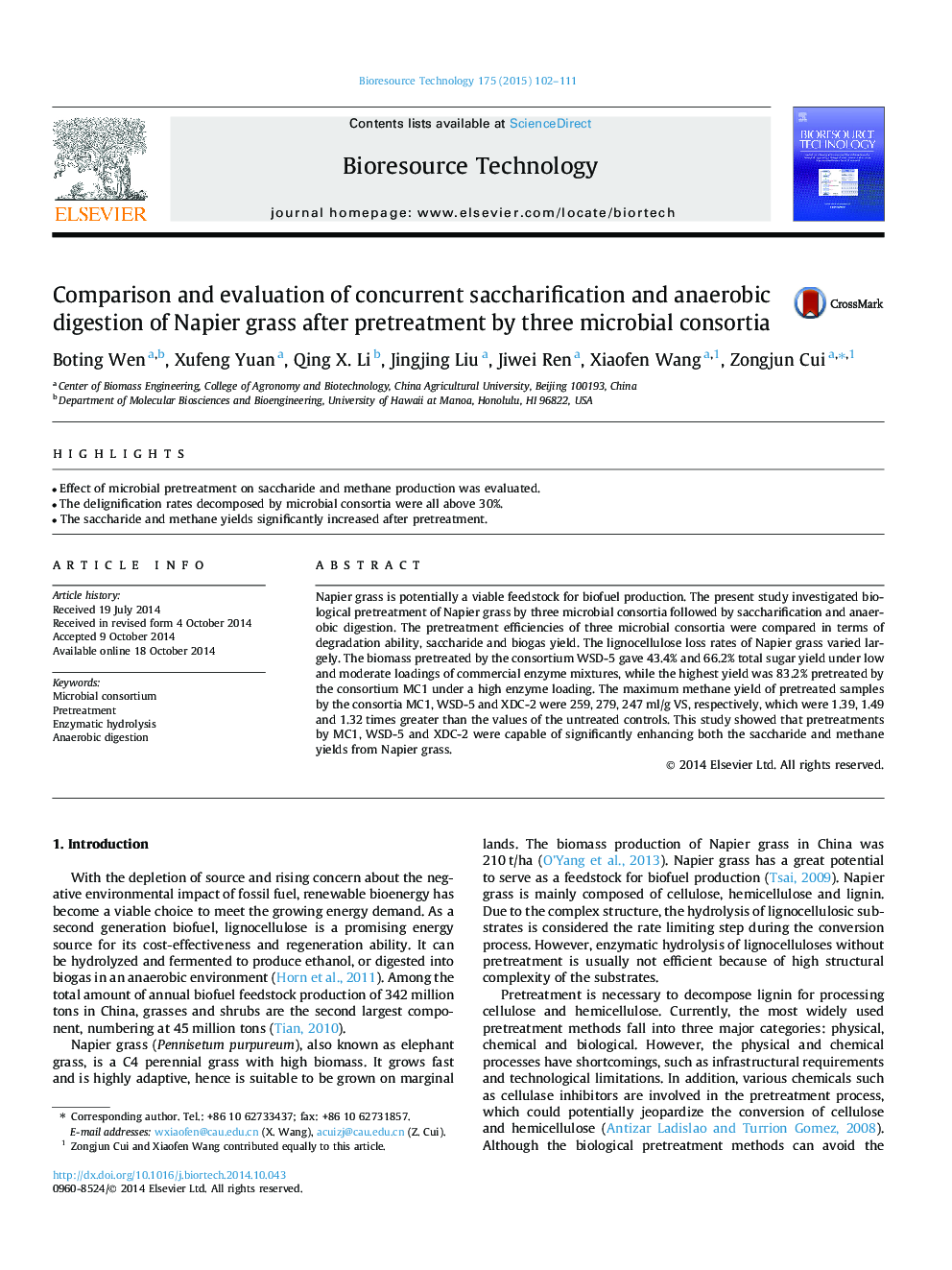| Article ID | Journal | Published Year | Pages | File Type |
|---|---|---|---|---|
| 680261 | Bioresource Technology | 2015 | 10 Pages |
•Effect of microbial pretreatment on saccharide and methane production was evaluated.•The delignification rates decomposed by microbial consortia were all above 30%.•The saccharide and methane yields significantly increased after pretreatment.
Napier grass is potentially a viable feedstock for biofuel production. The present study investigated biological pretreatment of Napier grass by three microbial consortia followed by saccharification and anaerobic digestion. The pretreatment efficiencies of three microbial consortia were compared in terms of degradation ability, saccharide and biogas yield. The lignocellulose loss rates of Napier grass varied largely. The biomass pretreated by the consortium WSD-5 gave 43.4% and 66.2% total sugar yield under low and moderate loadings of commercial enzyme mixtures, while the highest yield was 83.2% pretreated by the consortium MC1 under a high enzyme loading. The maximum methane yield of pretreated samples by the consortia MC1, WSD-5 and XDC-2 were 259, 279, 247 ml/g VS, respectively, which were 1.39, 1.49 and 1.32 times greater than the values of the untreated controls. This study showed that pretreatments by MC1, WSD-5 and XDC-2 were capable of significantly enhancing both the saccharide and methane yields from Napier grass.
